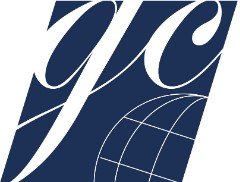When Winston met Jacinda: How a progressive icon and a nationalist firebrand found common ground
Kiwis stick together, especially when up against an Australian.
That’s what Australia’s Home Minister Peter Dutton realized when he accused New Zealand’s Prime Minister Jacinda Ardern of grandstanding in the lead-up to a re-election campaign later this year. The row started when Ardern criticized Canberra’s punitive deportation policy under which Australian residents with Kiwi citizenship found guilty of crimes could be deported across the Tasman, even if they had spent their entire lives in Australia.
Winston Peters, the Deputy Prime Minister of New Zealand came to Ardern’s defense. Peters castigated Dutton and the Australian government for being unfair and one-sided in their treatment of his country. “When you send back people who have been in Australia since year one or year two, you’ve lost the plot.”
What is striking about this exchange is that the Prime Minister and the Deputy Prime Minister are coalition partners from different parties that in any other Western democracy would be at odds. Ardern leads a social democratic party, New Zealand Labour, and has earned plaudits throughout her time in office as a youthful progressive icon. Winston Peters is the veteran head of the hard-right populist party, New Zealand First, and has the reputation of a crusty old reactionary – the closest Kiwi equivalent of Donald Trump or Nigel Farage.
While both leaders put up a united front against the Australian conservatives’ deportation policy, both Ardern and Peters espouse immigration policies just as likely to be described as tough and restrictionist.
NZ Labour’s campaign in the last election focused on reducing the country’s immigration intake to relieve pressure on housing and infrastructure, enabling the government to deliver better public services and stamp out employer abuse of migrant labour. Labour’s manifesto describes this as taking “a breather on immigration.”
NZ First has long advocated curtailing immigration on the grounds of economic protectionism and cultural conservatism. The convergence between Peters’ and Ardern’s platforms on this and other issues led the former to choose the latter as coalition partner in 2017. Peters cited the need for a more humane and responsible version of capitalism as his reason for siding with Labour over the more business-friendly conservatives. His decision elevated Ardern to the premiership.
Since assuming the top job, Ardern has made headlines around the world for progressive policies on economics and the environment, notably the redefinition of Gross Domestic Product to include measures of social well-being and sustainability. Her very public pregnancy and her heartfelt response to the tragedy of the Christchurch shooting impressed many around the world.
On immigration, Ardern’s Labour and Peter’s NZ First have found agreement on the need to lower intake and tighten visa entry rules, but tensions remain between the two parties over several more specific policy questions, such as the particular number of refugees the country should accept. Ardern proposed raising it from 1,000 to 1,500 refugees a year while Peters stressed the need to resolve pressing domestic issues first.
More explosive disagreements have played out between Labour and NZ First with respect to political style and rhetoric, such as the recent controversy over comments made by Infrastructure Minister Shane Jones. A convert from Labour to NZ First, Jones made comments about the Indian community that were widely interpreted as racist and inflammatory. Ardern condemned his comments, urging voters to express their dissatisfaction at the voting booth. With elections coming in the fall, the end of the Labor-NZ First partnership is likely in sight as the two parties return to being political competitors.
Throughout her tenure as prime minister, Jacinda Ardern has tried to maintain a balance between representing the valid concerns of her constituents about immigration capacity and the responsibility to ensure a diverse, inclusive, and compassionate society. It has been a delicate balancing act to say the least, and occasional commentary from the international press comparing her to the Trump administration on immigration has been known to annoy her.
In response to one such comparison, she replied “We are a nation built on immigration – I’m only a third-generation New Zealander… the suggestion in any way that New Zealand wasn’t an open, outward-facing country – the suggestion that I was leading something counter to that value – makes me extremely angry.”
The Ardern-Peters partnership could go down in history as a harbinger of the new normal in a time of increasing scepticism about the free flow of capital, goods, and people that characterize contemporary globalization, or it could just be a momentary aberration. Either way, it illustrates how the progressive left and the populist right can work together in pursuit of common goals. It has shown that even self-consciously cosmopolitan leaders of the left like Ardern are not altogether out of line when they choose to be cautious about immigration. Likewise, Peters has proven that running on the right doesn’t just mean promising more tax cuts. It seems as if there’s a richer set of possibilities in politics than either the conventions of right and left would suggest.

